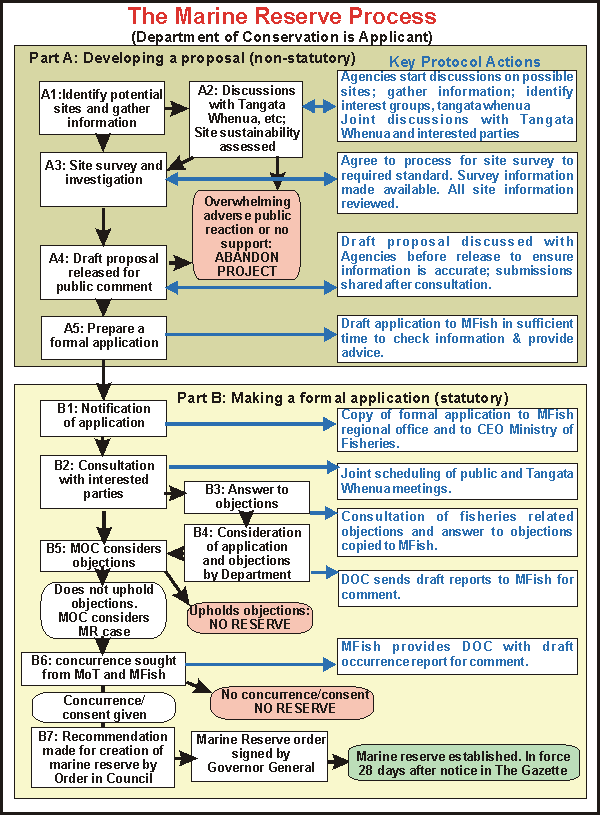The statutory process
See section 5 of the Marine Reserves
Act 1971 (MRA71) for details
| Application is made to the Director General, Department of Conservation
(DG) |
| Application satisfies S.3(1) of the MRA71 |
If application does not satisfy S.3(1): application
does not proceed |
|
Public notification of intention to apply for an 'Order-in-Council'
declaring the area a marine reserve, anyone owning an estate or interest
in land adjoining the proposed reseerve and any local authority with jurisdiction
over the area, any local authority with control of the foreshore in the
area, the Secretary of Transport and the Director General of Fisheries
notified in writing by the applicant.
The proposed MRA2004 excludes the Ministries
of Transport and Fisheries. Their concurrence will no longer be required. |
| 2 month objection period |
Includes objections and submissions in support |
There is no further consultation
|
| 1 month for the applicant to answer the objections. |
| DG refers the application, objections and answers to objections to
the Minister of Conservation. |
Before considering the application, the Minister of Conservation
considers the objections and the applicant's answers to them (if supplied)
This process is not transparent, conducive to
practices declining objections while favouring support |
| Where DG is the applicant, the Minister of Conservation may call for
an independent report |
| Minister decides whether or not to uphold [1] any objections; applicant
and objectors notified in writing of the Minister's decision and the grounds
for it. |
Any objection upheld: application does not proceed |
|
| If no objections upheld, Minister of Conservation considers the application |
Minister not satisfied application meets the criteria in the Act: application
does not proceed. |
|
| If the Minister of Conservation is satisfied the application meets
the criteria in the Act, the concurrence of the Ministers of Fisheries
and Transport is sought. |
If concurrence is withheld: application does not proceed |
|
| If concurrence is obtained the Minister of Conservation recommends
the Governor-General make an Order-in-Council to establish the marine
reserve. |
| Order-in-Council is made and notified in the Gazette. Order
declaring the marine reserve comes into force 28 days after notification. |


